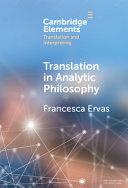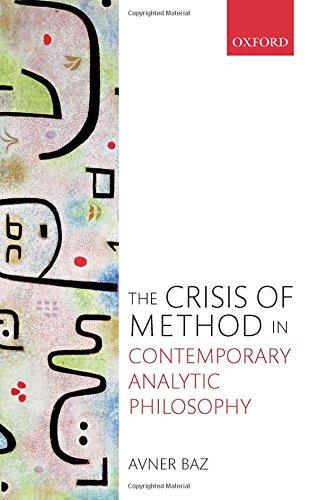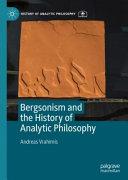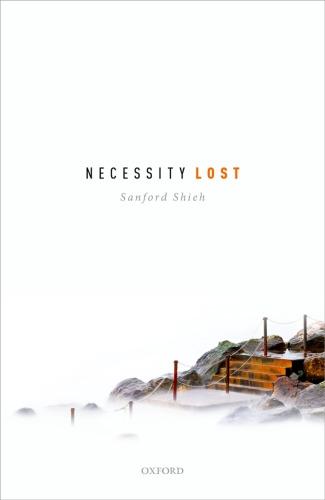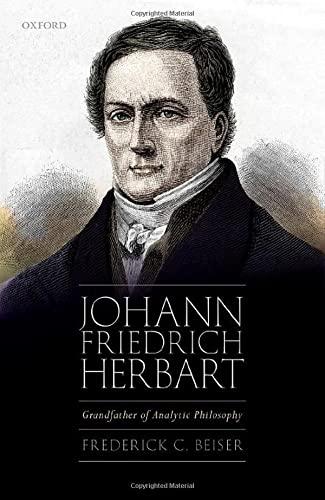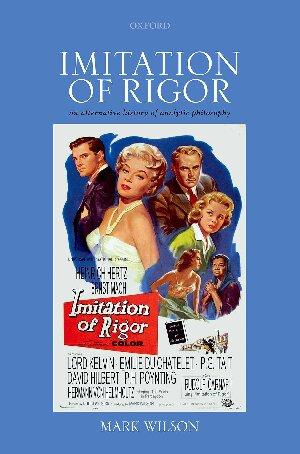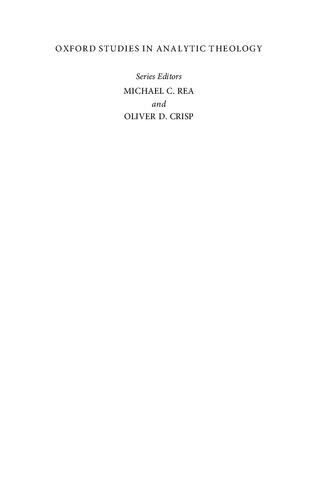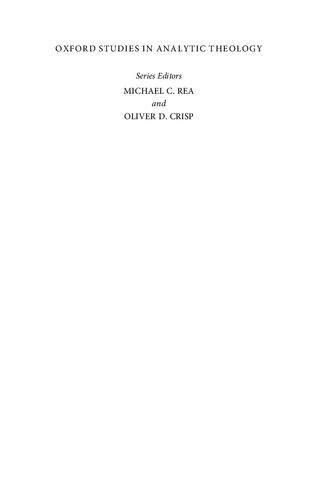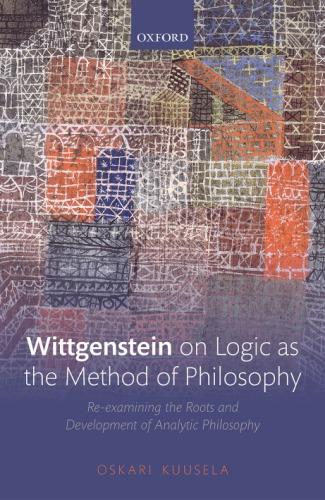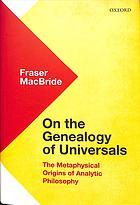INANALYTICPHILOSOPHY
FrancescaErvas UniversityofCagliari
ShaftesburyRoad,CambridgeCB28EA,UnitedKingdom OneLibertyPlaza,20thFloor,NewYork,NY10006,USA 477WilliamstownRoad,PortMelbourne,VIC3207,Australia
314–321,3rdFloor,Plot3,SplendorForum,JasolaDistrictCentre, NewDelhi – 110025,India
103PenangRoad,#05–06/07,VisioncrestCommercial,Singapore238467
CambridgeUniversityPressispartofCambridgeUniversityPress&Assessment, adepartmentoftheUniversityofCambridge.
WesharetheUniversity’smissiontocontributetosocietythroughthepursuitof education,learningandresearchatthehighestinternationallevelsofexcellence.
www.cambridge.org Informationonthistitle: www.cambridge.org/9781009454292
DOI: 10.1017/9781009351294
©FrancescaErvas2023
Thispublicationisincopyright.Subjecttostatutoryexceptionandtotheprovisions ofrelevantcollectivelicensingagreements,noreproductionofanypartmaytake placewithoutthewrittenpermissionofCambridgeUniversityPress&Assessment.
Firstpublished2023
AcataloguerecordforthispublicationisavailablefromtheBritishLibrary
ISBN978-1-009-45429-2Hardback
ISBN978-1-009-35132-4Paperback
ISSN2633-6480(online)
ISSN2633-6472(print)
CambridgeUniversityPress&Assessmenthasnoresponsibilityforthepersistence oraccuracyofURLsforexternalorthird-partyinternetwebsitesreferredtointhis publicationanddoesnotguaranteethatanycontentonsuchwebsitesis,orwill remain,accurateorappropriate.
ElementsinTranslationandInterpreting
DOI:10.1017/9781009351294 Firstpublishedonline:December2023
FrancescaErvas UniversityofCagliari
Authorforcorrespondence: FrancescaErvas, ervas@unica.it
Abstract: ThisElementaimstointroducethedifferentdefinitionsof translationprovidedinthehistoryofanalyticphilosophy.Startingfrom thedefinitionsoftranslationasparaphrase,calculus,andlanguage games,theElementexploresthemainphilosophical-analyticnotions usedtoexplaintranslationfromFregeandWittgensteinonwards. Particularattentionispaidtotheconceptoftranslationequivalencein theworkofQuine,Davidson,andSellars,andtotheproblemof translatingimplicitversusexplicitmeaningintoanotherlanguageas discussedbyGrice,Kripke,andthecontemporarytrendsinanalytic philosophyoflanguage.
Keywords: translation,analyticphilosophy,philosophyoflanguage, translationequivalence,translatability
©FrancescaErvas2023
ISBNs:9781009454292(HB),9781009351324(PB),9781009351294(OC)
ISSNs:2633-6480(online),2633-6472(print)
Introduction
ThisElementdrawson,andfrom,workontranslationequivalenceandtranslationdefinitioninanalyticphilosophythatIhavepublishedoverthepast fifteen yearsinaseriesofpapersinphilosophyandlinguisticsjournals.Thepurposeof thisElementistopresentvariousinterpretationsoftranslationasobservedin thehistoryofanalyticphilosophy,showingtheirtheoreticallimitationsaswell astheirconceptualvaluefortranslationtheory.Itbeginswithexaminingthe definitionsoftranslationasparaphrase,calculus,andlanguagegame,andthen delvesintothekeyphilosophical-analyticconceptsusedtodescribetranslation.
Analyticphilosophyisaphilosophicalapproachthatemphasizestheuseof logicalanalysisandempiricalmethodsinthepursuitofunderstandingand solvingphilosophicalproblems.Itemergedintheearlytwentiethcenturyin ‘continental’ Europe1 andischaracterizedbyitsfocusonclarity,precision,and argumentativerigour,aswellasitsrejectionoftraditionalmetaphysicaland speculativeapproachestophilosophy.Analyticphilosopherstypicallyseekto clarifyconcepts,examinethelogicalrelationshipsbetweenpropositions,and usescientificmethodstoevaluatephilosophicalclaims(Glock,2008).In analyticphilosophyoflanguage,theproblemofmeaninghasbeencentralto philosophicaldebates.Insuchaframework,theconceptoftranslationhas provedtobepivotalinansweringthequestionofthenatureofmeaningand analysingtheproblemofmeaningsamenessacrosslinguisticdifferences (Malmkjær,1998).
WillardvanOrmanQuine,oneofthemostprominentanalyticphilosophers andwell-knownscholarsintheinterdisciplinary fieldofTranslationStudies (VanLeuven-Zwart&Naaijkens,1991),attemptstounderstandtheproblemof meaningbystudyingtheproblemoftranslation.Hedefinesmeaningitself,in thesecondchapterof WordandObject (1960),as ‘whatasentenceshareswith itstranslation’ (Quine,1960:32).Quine’sanalysisaimstodeterminewhat ‘sameinmeaning’ meansandwhatthiscommonalitybetweenasentenceandits translationmightbe.ThecentralproblemofQuineanphilosophy,whichisalso takenupbyDonaldDavidson,istodescribewhat ‘thesamemeaning’ is.This problempertainstoalltypesoftranslation,notjust interlingual translation (betweendifferentlanguages)butalso intralingual translation(withinthesame language)or rewording (cf. Jakobson,1959).Evenwhenwecommunicatewith
1 Analyticphilosophyhasbeenopposedto ‘continental’ philosophy(see,forexample, D’Agostini, 1997),wronglyconfrontingthephilosophicalstyleofsomephilosophers(‘analytic’)withthe geographicalareaofotherphilosophers(‘continental’).However,manyphilosophersconsidered thatfatherfoundersofanalyticphilosophy,suchasFrege,Carnap,andWittgenstein,camefrom ‘continental’ Europe(see Section1 and 2).
someonewhospeaksourlanguage,wemaywonderwhatensuresthatthey understandusinthesamewaythatweintend:
Ondeeperreflection,radicaltranslationbeginsathome.Mustweequateour neighbour ’sEnglishwordswiththesamestringsofphonemesinourown mouths?Certainlynot;forsometimeswedonotthusequatethem. Sometimeswe findittobeintheinterestofcommunicationtorecognize thatourneighbour ’suseofsomeword,suchas ‘cool’ or ‘square’ or ‘hopefully’,differsfromours,andsowe translatethatwordofhis intoadifferent stringofphonemesinouridiolect.(Quine,1969a:46,italicsadded)
Inthesamevein,Davidsonremarkedthatcomprehendinganotherperson alwaysentailsreflectingonwhatitmeans ‘toassignthesamemeaningtothe words’,whethertheyspeakourmothertongueoralanguageweareunfamiliar with:
Theproblemofinterpretationis domestic aswellas foreign:itsurfacesfor speakersofthe samelanguage intheformofthequestion,howcanitbe determinedthatthelanguageisthe same?Speakersofthe same languagecan goontheassumptionthatforthemthe same expressionsaretobeinterpreted inthe same way,butthisdoesnotindicate whatjustifiestheassumption.All understandingofthespeechofanotherinvolvesradicalinterpretation. (Davidson,1984d:125,italicsadded)
Atthecoreofinterpretingaspeaker ’slinguisticexpressionsaremechanisms andchallengesthatareverysimilartothoserelatedtounderstandingforeign expressions.Therefore,whenDavidsonexaminesinstancesofinterpretingone languageintoanother – wheretheneedforinterpretationmaybemoreapparent –itisonlytoelucidatewhatisassumedincomprehendingthemeaningof expressionsconveyedinanylanguage.
TheanalyticphilosophyoflanguageproposedbyQuineandDavidson enteredthedebateinTranslationStudiesespeciallybecauseoftheirfocuson thevarietyofconceptualschemeslinkedtodifferentlanguages,questioningthe notionofmeaningitselfandpossiblyleadingtorelativisticoutcomesintranslation(Malmkjær,2005:ch.3).However,somescholarshavearguedthat ‘with thehonourableexceptionsoftheAmericansW.V.O.QuineandDonald Davidson eventhelinguisticallyorientatedanalyticalphilosophyofthepostwarperiodhasgenerallyfailedtoengagewiththetopic’ (Large,2014:182–3; seealso Pym,2007; Arrojo,2010).
The firstobjectiveoftheElementistoshowthatQuineandDavidsondidnot abruptlymakecentraltheissueoftranslationthathadbeenignoredbytheir colleagues,butrathergaveitgreaterandstrategicallydifferentimportancein analyticphilosophy.Tothisaim,theElementhistoricallyreconstructsthemain
phasesofthereflectionontranslationinanalyticphilosophy,presentingthe differentviewsontranslationprovidedbygiantsinanalyticphilosophywhoare oftenneglectedinTranslationStudies,butmightbeofextremeinterest,especiallyfortranslationtheory.Inthisperspective,Quine’smentalexperimenton radicaltranslationwouldnotunexpectedlyenterthesceneofanalyticphilosophy,asCarnapandWittgensteinalreadypresentedit,withindifferenttheoreticalframeworkswhichofferfundamentaltoolstostudytranslationand translation-relatedconceptualissues.
ThesecondobjectiveoftheElementistohighlighttheshortcomingsof analyticphilosophywheninvestigatingtheproblemoftranslation.Themain limitationsofanalyticphilosophyinthestudyoftranslation,whichalsoprevent TranslationStudiesscholarsfromapproachingit,canbeidentifiedwiththeuse ofspecificformalmethodsthatareappliedtoformalizedlanguagesratherthan naturallanguages,andwiththelanguage-centricandartificialuseoftranslation exampleswhichoftenlacksrepresentationofactualtranslationpractice.In particular,theAnglophonenatureoftheanalytictradition,especiallyinthe post-warperiod,deeplyinfluencednotonlyresearchonthelinguisticaspectsof translationbutalsotheculturalapproachtotranslation.
Thus,themethodofanalyticphilosophyitselfisadouble-edgedswordfor thestudyoftranslation:ontheonehand,itcanprovideusefulinsightsforthe conceptualclarificationofdifferenttheoreticalproblemsinvolvedintranslation,butontheotherhand,itcanproposeanidealizedversionoftranslation bringingscholarsfarawayfromthereallinguisticandculturalchallengesof translation.ThisElementaimstobringtolightthemaincontributionsto translationtheorycomingfromanalyticphilosophy,andthewaystohighlight thelimitationsmentionedearlierincontemporaryanalyticphilosophy.
Therefore,thesectionscomposingtheElementexaminethedifferentviewof translationprovidedbythemainphilosophersinthehistoryofanalyticphilosophy,fromthebeginningstonowadays. Section1 considersthedefinitionof translationasparaphrase,referringtosomeworksbyGottlobFrege,Bertrand Russell,andRudolfCarnap,the ‘fatherfounders’ ofanalyticphilosophyof languageandofthemethoditselfofanalysisastranslationofnaturallanguage intoaclearer ‘logical’ language. Section2 isdedicatedtotwoviewsoftranslationproposedbyLudwigWittgenstein:translationascalculusinthe Tractatus logico-philosophicus (1921,hereafter ‘TLP’)andtranslationasalanguage gamein PhilosophicalInvestigations (1953,hereafter ‘PI’).Inthislatter work,Wittgensteinharshlycriticizedhisownpreviousviewoftranslation, takingdistancefromCarnap’sviewoftranslationand,ingeneral,fromthe assumptionsonlanguagesharedbytheViennaCircle,towhichCarnap belonged.
Theproblemofconceptualrelativismandtheveryideaofaconceptualscheme, assuggestedbyHans-JohannGlockintheanalysisoftheWittgensteiniantexts, willbethepointofcontactwiththefollowingsectionsonQuineandDavidson.In Section3,thefamousQuineanmentalexperimentofradicaltranslationwillbe presented,showingthattheradicaldifferenceamongconceptualschemesassociatedwithlanguagesbringsQuinetodramaticconsequencesfortranslation.
Section4 showsthathisradicalholismandrelativismdirectlystemfromthe dissolutionofthenotionofmeaningheoperatedin TwoDogmasofEmpiricism (Quine,1953).However, Section5 aimstoshowthatDavidsonrightlycriticized thethirddogmaofEmpiricism,thatis,thedistinctionbetweenconceptualscheme andempiricalcontent,offeringapowerfulargumenttoovercomeQuine’sconceptualrelativismandconsequentoutcomesfortranslation.
Section6 willfocusontheconceptofsemanticequivalenceinDavidson’s ANiceDerangementofEpitaphs (1986),comparingitwithWilfridSellars’ notionofpragmaticequivalence,whichprovestobetoovaguebutstillnecessarytograspsomeaspectsofmeaninggoingbeyondthesemanticrealm.
Section7 isfurtherdedicatedtothe ‘pragmaticside’ ofmeaningintranslation, whichwasputasidebythephilosophersofideallanguage,suchasFrege,but finallyacquiredaprominentpositioninordinarylanguagephilosophy.More specifically,thesectionisdevotedtotheproblemoftranslatingtheimplicit meaningofatextintoanotherlanguageintheGriceanframework,which providesvaluableinsightsforbothtranslationtheoryandpractice.Indeed, withintheanalytictradition,ordinarylanguagephilosophydiffersfromideal languagephilosophy,preciselyinthemethodwhichlooksatrealhuman interactionsinconversationalcontextsratherthanregimentedlanguage.
FollowingPaulGrice, SaulKripke(1979)distinguishedbetweenwhatwords meanandwhatthespeakermeantbyusingthosewordsinagivencontext,and usedtranslationasatesttoidentifymeaningambiguityintheoriginaltext. AlbertoVoltolini(2009) proposedtostrengthenKripke’stest,arguingthatany linguisticphenomenonintheoriginaltextisgenuinelysemanticifitcanbe solvedthroughtranslation,forcingthetranslatortochoosebetweentwodifferentsensesinthewordsofanotherlanguage.Alinguisticphenomenonwouldbe genuinelypragmaticifitcanbepreservedintranslation. Section8,Iwill introduceKripke’stestanditsstrengthenedversionandwillarguethattranslationdoesnotworkasatesttodistinguishbetweensemanticandpragmatic phenomena,butitcaninsteadworkasatestforthedistinctionbetweenexplicit andimplicitphenomenaofmeaning.
In Section9,inlightofthecontemporarydebatebetweenLiteralismand Contextualism,Iwillclaimthatthedifferencebetweentheoriginalandthe alternativetranslationsistheresultofachangeinthedegreeofexplicitnessin
translation.Whatiscrucialtotranslationisthatlanguagesdifferinthestrategies usedtomakemeaningexplicit,inboththeirpragmaticprocessesofenrichment andimpoverishment(Carston,2002).Theseprocessesdrawinformation,not onlyfromtheoriginalsentencebutalsofromthecontext.
Intheconclusionsection,theElementprovidesothersourcesfordiscussion andfuturedirections,toshowhowcontemporaryanalyticphilosophersarefacing themainlimitationsofthemethodologicalapproachtotranslation.Thisincludes newformalmethods,suchaslogicalpluralism,andnewdisruptiveresearch themes,suchastheproblemoflinguisticinjusticeinalanguage-centricphilosophicaltradition.Whileattractingincreasinginterestandpotentiallyproviding newvenuesforresearchontranslationfromananalytic-philosophicalperspective,theyquestiontheverynatureofanalyticphilosophyanditstraditional method,aswellasitsabilitytostillprovideasignificantcontributiontoclarifying theproblemoftranslation.
1FromFregetoCarnap:TranslationasParaphrase
Translationhasbeenacentralprobleminanalyticphilosophyoflanguagefrom theverybeginning:theveryideaof ‘analysis’ inanalyticphilosophyof languagerequirestheconceptoftranslation.Indeed,aspointedout,theconcept ofanalysisitselfasaphilosophicalmethodrestsontranslation,andespecially onthe ‘translational’ notionofanalysisasaparaphrase: ‘here,theoriginalidea wastorephraseordinarysentencesthatappearedtoraisephilosophicaldifficultiesinsuchawaythatdifficultieswoulddisappear ’ (Marconi,2019:349). Arisingatthebeginningofthecenturyasatechnicalproblemwithin aspecificobjective(reducingmathematicstologic,thatis,oneformallanguage toanother),theproblemoftranslationchangedinthe1930stothatof finding ageneralmethodfortranslatingformalizedlanguages,andbytheendofthe 1950sitbecameoneofdelineatingthegeneralconditionsoftranslation, independentofthetypeoflanguagesinvolved(Morra,2009).
Theessay ÜberSinnundBedeutung (OnSenseandReference, 1892)by Fregeisbelievedtobetheoriginoftheanalyticschoolofthought,andit discussestranslation.Intheessay,Fregeexplorestheconditionsnecessaryfor anexacttranslation,includingthepossibilityofconstructingmathematics solelyfromlogicalconceptsandstatementsthroughamechanicalmethodor calculation.Fregeacknowledgesthatfullytranslatingthemeaningofanexpressionintoanotherlanguageispartiallyindeterminate,asonlythe reference (what itdenotes)and sense (theconceptualizationofthereferencefromaparticular pointofview – forexample, ‘7’ and ‘5+2’ bothdenotethesamenumberbutin differentways)areobjectiveandidenticalacrosslanguages.
Inparticular,thesenseispartofthe ‘commontreasureofthoughts’,whichis ‘transmittedfromgenerationtogeneration’ (Frege,1892:29).Onlythereferenceandsenseofexpressionsareobjectiveandthereforeshareable,and,above all,contributetothetruthvalueofthestatementsofwhichtheexpressionsare part.Fregethusbelievesthatatranslationmustpreservethesetwocomponents ofmeaning:referenceandsense.Onthecontrary,differencesincommunicative contentoreffectshouldnotbeconsideredasdifferencesinmeaning,butrather asdifferencesin tone.Suchdifferencesonlyserveto ‘colour ’ thecommunicativecontentofanexpressionandarethusexcludedfromasentence’smeaning.
Thedifferencebetweenatranslationandtheoriginaltextshouldproperlynot overstepthe firstlevel[thelevelofideas].Tothepossibledifferenceshere belongalsothecolouringandshadingwhichpoeticeloquenceseekstogiveto thesense.Suchcolouringandshadingarenotobjective,andmustbeevoked byeachhearerorreaderaccordingtothehintsofthepoetorthespeaker. Withoutsomeaffinityinhumanideasartwouldcertainlybeimpossible;butit canneverbeexactlydeterminedhowfartheintentionsofthepoetare realized.(Frege,1892:27)
Becausetoneissubjective,itcannotbeconsideredpartofarigorous,precise science.Inotherwords,whileatranslationmayvaryinappropriatenessandoverall communicativecontentbasedoncontext,agoodtranslationshouldmaintain meaning,butneednotpreservethetoneorcommunicativeeffect,alsoknownas the ‘pragmaticside’ ofmeaning.Thus,thelimitationoftheFregeandefinitionof translationisthatitdoesnotconsiderthepragmaticaspectsofmeaning.Other analyticphilosophers,suchasSellars(see Section6),andespeciallyphilosophers ofordinarylanguage,suchasGrice(see Section7),willlaterproposetheoretical frameworksfocusingonthe ‘pragmaticside’ ofmeaningintranslation.
InFrege’sview,inthatparticulartypeoftranslationwhichisthelogical reductionofmathematicalstatements,thepragmaticaspectofmeaning,isnotat play.Thereisamethodtoverifyifthisisthecase:forastatement,the translationpreservesthetruthvaluewhensubstitutingallitspartswithexpressionsofthesametruthconditions,andthesensewhenitcanbereplacedinthe compositionalsentencesofwhichitisacomponentwithoutmodifyingitstruth value.Forinstance,whenreplacing ‘dead’ withtheterm ‘deceased’,having adifferenttonebutthesametruthconditions,thetruthvalueofthesentence ‘Berlusconiisdead’ remainsunaltered.Indeed,Fregebelievedthatthecalculationnecessarytoreconstructmathematicsstartingfromlogiccouldhave adeterminedoutcome,because – totransmitthecontentoflogicstatements unaltered – itissufficienttopreservethereferenceandsenseoftheexpressions thatformthem,theonlycomponentsofthemeaningthataffectthetruthvalueof sentences,andwhosetranslationispreciselydetermined.
Instead,thementalimagesandassociationsthatareconnectedtoaspecific expressioncannotbeguaranteedtobethesameinanotherlanguage:differently fromtheterm ‘dead’,theterm ‘deceased’ canonlybeassociatedwithaperson andmayevokeamoredetachedattitudetowardthatperson.Theserepresentationsnotonlydifferbetweenindividualsbutalsorelyontheunique ‘psychologicalhusk’ ofthelanguageinwhichtheexpressionisused.Thishuskis responsibleforshapingthegrammarofthoughtsandplaysaroleindetermining beliefattributionintranslation(Santambrogio,2002).AsFregewrote(1879–1891:6):
Grammar ... isamixtureofthelogicalandthepsychological.Otherwiseall languageswouldnecessarilyhavethesamegrammar.Canthesamethought beexpressedindifferentlanguages?Withoutadoubt,sofarasthelogical kernelisconcerned;forotherwiseitwouldnotbepossibleforhumanbeings toshareacommonintellectuallife.Butifwethinkofthekernelwiththe psychologicalhuskadded,aprecisetranslationisimpossible. ... Fromthis wecanseethevalueoflearninglanguagesforone’slogicaleducation;when weseethatthesamethoughtcanbewordedindifferentways,ourmind separatesoffthehuskfromthekernel,though,inanygivenlanguage,it appearsasanaturalandintegralpartofit.Thisishowthedifferencesbetween languagescanfacilitateourgraspofwhatislogical.
Aspointedout(Marconi,2019),Fregeintendedhisformallanguagetoserveas asubstitutefornaturallanguageinscientificcontexts,ratherthanasameansof paraphrasingthe ‘true’ meanings.Nevertheless,sinceformulascouldbeclarifiedbytranslatingthemintonaturalsentences,theywerefrequentlyseenas conveyingthesameconceptsthatwereexpressed,frequentlymoreambiguously,bynaturallanguage.Also,Russell’sanalysisshouldbeseenonthe backgroundofFrege’screationofaformallanguage:hisworkondefinite descriptionsin OnDenoting (Russell,1905)showsthatproblematicsentences concerningnon-existentobjects,suchas ‘ThepresentkingofFranceisbald’ , canbe paraphrased intothefollowingsentencesthatmakeitclearthatitisfalse andnotaboutnon-existentobjects:(a)thereexistssomethingthatisthepresent kingofFrance;(b)thereisonlyonethingthatisthepresentkingofFrance;and (c)anythingthatisthepresentkingofFranceisbald.Russellisthus ‘better associatedwiththenotionofanalysisas paraphrase,ofwhichhistreatmentof definitedescriptionswouldbecomeaparadigm’ (Marconi,2019:348,italics added).
Russellwasaninfluential figureamongtheanalyticphilosopherswhocame later:theyviewedanalysisasa processofrephrasing problematicsentences intoclearerandunambiguoussentences,whileretainingtheirmeaning.This activitywasexplicitlyperformedbyanalyticphilosopherstouncoverthe ‘true
meaning’ ofasentence,whichtheybelievedtobehiddenbyitssurface-level grammaticalstructure.Forinstance,Carnapemployedparaphrasesinhis LogischeSyntaxderSprache (LogicalSyntaxofLanguage, 1934)todemonstratethatsentencesregardingobjectswere,infact,referringtowordsby translatingthemintothe ‘formalmodeofspeech’ . 2 Carnapindeedsharedhis philosophicalframeworkwiththeViennaCircle,agroupofphilosophersand scientistsintheearlytwentiethcentury,whosoughttoestablishaunified approachtoknowledgebasedonlogicalpositivism.Thus,Carnap, aprominentmemberoftheViennaCircle,contributedtothedevelopmentof logicalsyntax,butalsototheverificationprinciple,accordingtowhichan expressionisonlymeaningfulifitcanbeverifiedthroughempiricalobservation orlogicalproof,askeytenetsoftheirphilosophicalprogramme.
Overturningtheexplanatorypriorityfromreferencetomeaning,Carnapemphasizedtheimportanceofformalrelationshipsbetweenexpressionswithin alanguagewhenitcomestotranslation.Hisconventionaliststancecreatedthe basisforcomparingpropositionsacross languages,notbasedonrealitybuton athirdlanguagethatconnectsthesourceandtargetlanguages.AsCarnap explained(1934:§32),thisoperationhastheformofa calculus:
Theinterpretationofalanguageisatranslationandthereforesomething whichcanbe formallyrepresented;thereconstructionandexaminationof interpretationsbelongtoformalsyntax.Thisholdsequallyofaninterpretationof,say,FrenchinGermanwhenwhatisrequiredisnotmerelysome kindoftransformanceinrespectofsentences,but,aswesay,arenderingof thesenseormeaningoftheFrenchsentences. Inthecaseofanindividual languagelikeGerman,theconstructionofthesyntaxofthatlanguagemeans theconstructionofacalculusthatfulfilstheconditionofbeinginagreement withtheactualhistoricalhabitsofspeechinGerman-speakingpeople.And theconstructionofthecalculusmusttakeplaceentirelywithinthedomainof formalsyntax,althoughthedecisionastowhetherthecalculusfulfilsthe givenconditionisnotalogicalbutahistoricalandempiricalone,whichlies outsidethedomainofpuresyntax.Thesamethingholds,analogously,forthe relationbetweentwolanguagesdesignatedastranslationorinterpretation.
Carnapdefinesthemeaningofasentenceasthesetofsentencesthatfollow fromit(i.e.,havingaconsequencerelation),andhepresentsamethodto explicitlyidentifytheformalimplicationsthatstemfromadoptingasystem ofsymbolconnectionintranslation.Iftherelationsofconsequencethatdetermineifasentencebelongstothesetofconsequencesofanothersentencecanbe
2 Asremarked(Marconi,2019:354): ‘Itshouldbeaddedthatthemodelofanalysisasparaphrase hadnotbeenentirelyobliteratedinthe1930sand1940s,evenasidefromCarnap’sessential contribution’,butthemostimportantinnovationcamelaterwithRichardM.Montague’s ‘rigorizationofparaphrase’ informalsemantics(Montague,1973).
definedinbothlanguagesinvolvedinatranslation,andifalanguageisprovided toformulatethesyntaxofbothlanguagesandestablishaone-to-manycorrespondencebetweentheirtypesofelements(symbols,expressions,sentences) whilepreservingthelogicalconsequencerelationshipbetweensentences,itis possibletocontrastthesetsofsentencesthatareconsequencesofthoserelated throughtranslation.Actually,Carnapproposesa scalarnotionoftranslation, whichconsidersasyntacticcorrelationone-to-many(Morra,2009).
Foratranslationtobereversible,theremustbeauniquecorrelationbetween theelementsofoneexpressivelevelinthelanguagesbeingtranslated.However, ifthecorrelationbetweensimplesymbolsisnotone-to-one,thenthetranslationis onlyreversibleforthecorrespondingtransposedexpressiveelements.Thisis becauseevenifasymbolinthetargetlanguagedoesnothaveadirectcounterpart inthesourcelanguage,itscomponentscanbecombinedtoformanequivalent symbol.Thepreservationofmeaningisonlycompletelyachievedthroughan isomorphictranslation.Whendealingwithcompoundexpressionsorsentences, abijectivecorrespondence(i.e.,acorrespondencecreatingaconnectionbetween twosetswhereeachsymbolfromonesetismatchedwithasymbolfromthe otherset)canonlypreservethetruthconditionsandtruthvalueofthetext. Despitethepossibilityofcorrelatingmultipleequivalentmeaningstohigher-level syntacticobjects,achoicemustbemadebasedonextra-syntacticfactors.Carnap arguesthatthischoicecanbeformalized,ensuringthattranslationremainsan operationwithadeterminedoutcome(Ervas&Morra,2013).
WhenCarnapmovedtotheUnitedStatesin1935,heplacedmoreimportance onthecorrelationbetweensignsandtheirdesignatedmeanings.HewaspersuadedbyTarski’sformalizationofthetruthconcept(Tarski,1933),whichled himtobelievethatthesyntacticmethodcouldbeintegratedwithasemantics system,tobeexpressedinaricherlanguagetoestablishthetruthconditionsfor eachsentence.In MeaningandNecessity:AStudyinSemanticsandModal Logic (1947),Carnapproposedthatiftwodifferentlanguagesexpressthesame individualconcept,property,orproposition,andiftheirsemanticrulesestablish thattheyrefertothesameindividual,groupofindividuals,ortruthvalue,then theyhavethesameintension,3 thatis,L-equivalence.However,the L-equivalenceofsentencesmaynotbesufficientforanexacttranslation:
Ifweaskforanexacttranslationofagivenstatement,saytheexacttranslationofascientifichypothesisorofthetestimonyofawitnessincourtfrom
3 The intension ofanexpressionreferstoitsmeaning(orconceptualcontent),whereasits extension includeseverythingthatrepresentsorexemplifiesthemeaning(orconceptualcontent).For instance,theintensionof ‘ship’ asanounis ‘vehiclefortransportingsomethingonwater ’ , whereasitsextensionembracessuchthingsascargoships,passengerships,battleships,and sailingships.
FrenchintoEnglish,weshouldusuallyrequiremuchmorethanagreementin theintensionsofthesentences,thatisL-equivalenceofthesentences.Evenif werestrictourattentiontodesignative(cognitive)meaning – leavingaside othermeaningcomponentsliketheemotiveandthemotivative,althoughthey areoftenveryimportantevenforthetranslationoftheoreticaltexts –L-equivalenceofsentencesisnotsufficient;itwillberequiredthatatleast someofthecomponentdesignatorbeL-equivalent,inotherwords,thatthe intensionalstructuresbealikeoratleastsimilar.(Carnap,1947:59–60)
Hisrefinementoftheconceptsofmeaningandsynonymyledtoamorenuanced understandingoftranslation fidelity.Atranslationcanbeequivalentinmeaning (havingthesametruthvalue),logicallyequivalent(havingthesametruth conditions),isomorphic(havingequivalentsymbols),orintensionallyisomorphic(havingelementswiththesameintensionastheircounterpartsinthe sentence).Thelastcaserecreatesananalogousrelationalstructureandfully preservesmeaning(Ervas&Morra,2013).
Carnapmaintainedaninterestinnaturallanguagesandviewedthemas systemsofhabitsthatproducespecificsoundsforvariousactionssuchas communicationorinfluencingthoughts.Inlinewiththemainassumptionof theanalyticphilosophyofideallanguage,hebelievedthatatheoryoftranslation,whicheliminatesexpressiveambiguities,couldbeappliedtonatural languagesjustasitisappliedtoformalizedlanguages.Thus,Carnapshared withhispredecessorsinanalyticphilosophyofideallanguage,Fregeand Russell,theideathattranslationworksinnaturallanguagesinthesameway asinformalizedlanguages,oncethe ‘pragmaticside’ ofnaturallanguageshas beeneliminated.Thisisofcoursealimitationforthestudyoftranslationin naturallanguages,whicharecontextual-andcultural-dependent,alimitation thatanalyticphilosophersofordinarylanguageaimedtoovercome(see Section7).
Carnapheldthebeliefthattheextensionandintensionofformalconstructs couldalsobeidentifiedwithinnaturallanguages.Carnapacknowledgedthat whendealingwithanunfamiliarverbalsystem,thecognitive-explanatory processfromintensiontoextensionisreversed.Observersmustanalysethe linguisticreactionsofspeakerstoeventsandtheirnon-linguisticbehaviourin theworldtounderstandthesystem,asintensionsareinherentlylinkedtoan unknownlinguisticcontext.Therefore,toestablishpossibleequivalencerules withsymbolsfromone’slanguagetoanother,onemust firstdeterminethe extensionofcertainexpressionsintheunknownlanguage,andthenanalyse theirintensions.Althoughanextensionmayhavemultiplecorresponding intensions,observingthebehaviourofspeakerscannarrowdownthepotential rangeoftheextension.In IntroductiontoSemantics (1942),hewrote:
Descriptivesemanticsandsyntax[asopposedtopuresemanticsandsyntax] areindeedbasedonpragmatics.Supposewewishtostudythesemanticaland syntacticalpropertiesofacertainEskimolanguagenotpreviouslyinvestigated.Obviously,thereisnootherwaythan firsttoobservethespeaking habitsofthepeoplewhouseit.Onlyafter findingbyobservationthe pragmaticalfactthatthosepeoplehavethehabitofusingtheword ‘igloo’ whentheyintendedtorefertoahouseareweinapositiontomakethe semanticalstatement ‘“igloo” means(designates)house’ andthesyntactical statement ‘“igloo” isapredicate’.(Carnap,1942:12–13)
Later,Carnapdescribedanimaginaryscenarioinwhichalinguistwithno knowledgeoftheGermanlanguageattemptedtolearnitbyobservingthe linguisticbehaviourofnativespeakers.Thelinguistreducedthediscussionto themeaningofafewpredicates,andfromthereattemptedtodeterminetheir extension.Toachievethis,thelinguistwouldneedtoverify,viaverbalexpressionsofaGermanspeaker,whichthingsthosepredicateswoulddenoteaccordingtothatindividualspeaker.
Therelationshipbetweentheintensionandtheextensionofanexpression wasalsoatthecentreofQuine’sphilosophicalinterests.Quineinsteadargued thatitwasimpossibletodetermineaspecificintensiontobelinkedwiththe expressionofanunknownlanguagebasedonthelinguisticbehaviourofits speakers(Quine,1953,seealso Section3).In MeaningandSynonymyin NaturalLanguages (1955),Carnapexplicitlydeniedthattheaimofhiswork istodefend
thethesisthattheanalysisofintensionforanaturallanguageisascientific procedure,methodologicallyjustassoundastheanalysisofextension. Thecoreofthecontroversy[withQuine]concernsthenatureofalinguist’s assignmentofoneofthesepropertiestothepredicateasitsintension. ... The intensionalistthesis inpragmatics,whichIamdefending,saysthatthe assignmentofanintensionisanempiricalhypothesiswhich,likeanyother hypothesisinlinguistics,canbetestedbyobservationsoflanguagebehavior. Ontheotherhand,the extensionalistthesis assertsthattheassignmentofan intension,onthebasisofthepreviouslydeterminedextension,isnot aquestionoffactbutmerelyamatterofchoice.Thethesisholdsthatthe linguistisfreetochooseanyofthosepropertieswhich fittothegiven extension;hemaybeguidedinhischoicebyaconsiderationofsimplicity, butthereisnoquestionofrightorwrong.(Carnap,1955:236–7)
Carnapconcludedthatthisapproachwouldleadtomanydoubtsandmistakes,asboththeGermanspeakerandthelinguistcouldmakeerrors. Moreover, ‘ thegeneralizationtothingswhichhe[thelinguist]hasnottested suffers,ofcourse,fromtheuncertaintyofallinductiveinference ’ ( Carnap, 1955 :236).Thus,CarnapanticipatedthepossibleoutcomesoftheQuinean
extentionalistthesis(see Section3 ),whilemovingtowardamorepragmatic directionwithhisintensionalistthesis.
2Wittgenstein:TranslationasCalculusandTranslation asaLanguageGame
ThereflectionontranslationalsohadanimpactonWittgenstein’swork (Oliveiraetal.,2019).Asiswellknown,hisearlyworkspresupposelogical atomismfortranslatability,whilehislaterworksfocusongrammarandlanguagegames.Consequently,theauthorconsistentlyaddressesthequestionof whatconditionsenabletranslationinhisphilosophicalapproach.Thefactthat theterm Übersetzung (‘translation’)andrelatedwordsappear505timesin Wittgenstein’scollectedworksisacleardemonstrationoftheongoinginterest inthetranslationissue.Thisisasignificantnumberofoccurrences,asitis almostasfrequentastheterm Sprachspiel (‘languagegame’),whichisextensivelystudiedanddebatedamongscholars(Montibeller,2009).
Inthe Logisch-philosophischeAbhandlung (Tractatuslogico-philosophicus, 1921,TLP),Wittgensteindescribedtranslationasaformalandnecessary relationshipbetweenpropositionsindifferentlanguages,basedonthereference ofwords,whichisthe firstcomponentofmeaningidentifiedbyFrege. Wittgensteinpositedthatdifferentlanguagesareconcretemanifestationsof thesameprimarylanguageofthought,andthattheirpropositions,depictingthe samestateofaffairs,areintertranslatable: ‘IfIknowthemeaningofanEnglish andasynonymousGermanword,itisimpossibleformenottoknowthatthey aresynonymous,itisimpossibleformenottobeabletotranslatethemintoone another ’ (TLP,4.243).Inparticular,theelementaryobjectisseenasacrucial requirementfortranslationandtheultimatepointofreferenceforverifying whethertwostatementsaredescribingthesamething(seeTLP,4.21–4.431, 5.3–5.41).However,theobjectcanonlybeunderstoodinapropositional contextwhereitisdefinedthroughitsrelationshipswithotherobjectstocreate astateofaffairs.Thoughanobjectisdefinedasremainingstabledespite changesinrelationships,itsdefinitionisdependentuponcomprehendingthe relationshipsinwhichitexists,andthisisanessentialprerequisitefortranslatability(Ervas&Morra,2013).
Accordingtohisperspective,whentranslatingasentencetoadifferent language,itisnecessarytodeconstructitusingthelogicalsyntaxrulesthat areconsistentacrossmultiplelanguages.Thisinvolvedidentifyingthenamesof theobjectsrepresentedinthesourcelanguageand findingequivalentnamesin thetargetlanguage.Byapplyingthesamesyntacticrulestotheequivalent names,apropositionsimilartotheoriginalsentencecouldbeautomatically
created.InWittgenstein’swords(TLP,3.343): ‘Definitionsarerulesforthe translationofonelanguageintoanother.Everycorrectsymbolismmustbe translatableintoeveryotheraccordingtosuchrules.Itisthiswhichallhave incommon.’ Inthisperspective,translationisa calculus thatdoesnotrequire anyinterpretiveeffort,andlikeanycalculation,itisacompletelyreversible operation:thesetofrulesthatdeterminedatranslation,appliedinreverse, reproducesexactlytheoriginalsourcetext.AsWittgensteinremarkedinthe Tractatus (TLP,4.0141),usingthemetaphorofthegramophonerecord:
Inthefactthatthereisageneralrulebywhichthemusicianisabletoreadthe symphonyoutofthescore,andthatthereisarulebywhichonecould reconstructthesymphonyfromthelineonagramophonerecordandfrom thisagain – bymeansofthe firstrule – constructthescore,hereinliesthe internationalsimilaritybetweenthesethingswhichat firstsightseemtobe entirelydifferent.Andtheruleisthelawofprojectionwhichprojectsthe symphonyintothelanguageofthegramophonerecord.
WhileCarnapconcludedthattherewasaneedtocreateatranslationcalculus thatwasnotbasedonatriangulationfromonelanguagetorealityandthento anotherlanguage(see Section1),Wittgenstein’stheoryonlyensuredtheconsistencyofmeaningintranslationiflanguagesareisomorphictotheworld.In the Tractatus (1921),anelementarypropositionisconsideredtrueonlyifthe stateofaffairsitdescribesisactuallyoccurring,thus ‘thetranslationofone languageintoanotherisnotaprocessoftranslatingeachpropositionoftheone intoapropositionoftheother,butonlytheconstituentpartsofpropositionsare translated’ (TLP,4.025).However,thisisametaphysicalassumptionthat contradictstheneopositivistscientificideal.Thus,Wittgensteinlaterrejected the picturetheoryofmeaning andtheaccompanyingmetaphysicalconceptof statesofaffairs.Rejectingthishypothesischallengestheassuranceofreversible transformationofscientificlaws.Themeaningoftheselawsisdefinedbythe overallconceptualizationofobservationstatements,ratherthanjusttheindividualsensoryprimitivestheyrelyonfortheirbasis.
Between1930and1933,Wittgensteinalsorethoughtthecorrelationbetween languageandtheworld.Heviewedtranslationasa calculationthatoccurs againstthebackdropofathirdlanguage,andlikeCarnap,hebelievedthat translatinginvolvesselectingoneofthepotentialcorrelationsbetweendifferent symbolsoflanguages(see Section1).Thischoiceisbasedontheaspectsusedto equatethesymbolscalibratedforthepurposeofthetranslation.UnlikeCarnap, Wittgensteinbelievedthatinterpretationisinvolvedfromthebeginningofthe process,notjustattheend.Thus,thesemanticlevelofthetranslationprocess doesnotfollowthesyntacticlevel,butratherprecedesit.Indeed,whilefor
Carnapinterpretationisanadditionaltranslationfollowingthetranslation processitself,closedinrelationtoit,forWittgensteinitisanintegralpartof theprocess,determiningeverysinglestep(Montibeller,2009; Morra,2009). Thisisbecauseateachstageitisnecessarytodecidewhetherthecurrent generaltranslationruleisstillappropriateorshouldbechanged.Thisdecision ismadebycomparingthecurrentrulewithotherpossiblerules,whichare constructedinoppositiontoitatthemoment.Ifonesupposesthatselecting acertaintranslationruleoverotherscanbejustifiedandhasclearresults,then translatingbecomesafullyprecisecalculationwithnoroomforuncertainty.
Thisviewoftranslationhasthemeritofseeingtranslationasaprocessrather thanaproduct.However,Wittgensteinhimselfacknowledgedtheshortcomings ofthisview.Indeed,duringhisstudyofeverydaylanguageforms,Wittgenstein discoveredthatnotallthereasonsforchoosingaparticulartranslationbetween naturallanguagescanbeformalized.Thismeansthatattainingcompleteaccuracyintranslationcalculationisimpossibleintheselanguages(Ervas&Morra, 2013).Innaturallanguages,atranslationaltersthemessageconveyedinan irreversiblemannerasitsubstitutestheoriginalexpressionswithdifferent structuredphrases.Nonetheless,thisdoesnotnecessarilydiminishitsefficiency.Translationmodels,suchastheoneproposedbythe Tractatus,are onlyapplicabletolanguageswhosenamesrefertoasinglesetofsimpleobjects identifiedbythought,whichisanunlikelyhypothesiswhenappliedtonatural languages.Ifthetranslation,giventheformalstrategydiscussedinthe Tractatus,couldtakeplacealmostmechanically,nowtheproblemarisesof interpretingthemeaningofthewordsthatmustbeusedsothatanyrulecan applytothewiderlinguisticcontextthattheauthortargets.Toaccommodatethe broaderresearchcontext,amoreuniversaltheoryoftranslationwasnecessary, onethatisnotrestrictedbythespecificfeaturesofthelanguagesinvolved,but ratherdesignedtoaddressthecomplexitiesofnaturallanguages(see Wilson, 2016).
Theideasofthe Tractatus inspiredtheViennaCirclephilosopherstodevelop theprojectoflogicalanalysisfurther.Theysoughttoeliminatemetaphysical andmeaninglessclaimsfromphilosophy,andinsteadpromoteascientificand logicalapproachtounderstandingtheworld.TheysawthemselvesascontinuingandexpandinguponWittgenstein’swork,refiningandsystematizinghis ideas.Whileheprovidedthemwithaframeworkforanalysinglanguage, emphasizinglogicalrelationships,andpromotingempiricism,Wittgenstein himselfneverbecameamemberoftheViennaCircle,distancinghimself fromitsmembersandharshlycriticizingthem,Carnapincluded.
WittgensteincriticizedtheViennaCircleprimarilyduetotheiradherenceto logicalpositivismandtheirexcessiverelianceontheverificationprinciple
(see Section1),whichwasrightlyperceivedasoverlyrestrictiveandledtothe exclusionofimportantaspectsoflanguageandmeaning.Wittgensteinadvocatedforabroaderunderstandingoflanguageandmeaningthatincorporatesthe complexitiesandnuancesofhumancommunication.Wittgensteinalsorightly accusedtheViennaCircleofattemptingtosolvephilosophicalproblemsby reducingthemtoscientificorlogicalissues.Indeed,manyphilosophicalproblemscannotberesolvedthroughempiricalorscientificmethodsalone,asthey involvedeep-seatedconceptualconfusionsormisunderstandings.
TheculturalenvironmentinViennahadanimportantinfluenceonthedevelopmentofWittgenstein’sthought(Janik&Toulmin,1973),butinCambridge, discussinghisideaswithhisstudents,otheranalyticphilosophers,andgreat economists,suchasJohnMaynardKeynesandPieroSraffa,Wittgenstein changedhismindonthenatureoflanguage.Wittgensteinnowclaimedthatnot allmeaningfulstatementscanbereducedtoempiricalobservations,aslanguage servesvariouspurposesbeyondsimpleempiricaldescription.Heemphasizedthe importanceof languagegames (PI,7,24)andthecontextualnatureoflanguage, assertingthatmeaningisderivedfromits use inspecificsocial,cultural,and linguisticcontexts.Thiswasarevolutionwithintheanalyticphilosophyof language,whichinsomewayplacedthe ‘second’ orlaterWittgensteinoutside ofanalyticalphilosophyitself,intermsofcontentandmethod.
Inthisnewperspective,thereisnosystematicwaytotranslateintoevery language.Translationdoesnotresultinapredeterminedoutcomeeitherbefore orafterthetranslationprocess.Thisisduetothefactthattranslationisnot amechanicalcalculationthatisnecessarilylinkedtoreality,andtherules governingtranslationhaveastructurallycontingentnature.Furthermore, theserulesarenotonlycreatedforthespecifictranslationtaskbuttheydonot evenobtainnecessarycharacteristicsduringtheprocess.Translationislike amathematicalproblemthat,likethetranslationofapoemorajoke,hasno systematicmethodforsolution:
Translatingfromonelanguageintoanotherisamathematicaltask,andthe translationofalyricalpoem,forexample,intoaforeignlanguageisquite analogoustoamathematicalproblem.Foronemaywellframetheproblem ‘Howisthisjoke(e.g.)tobetranslated(i.e.,replaced)byajokeintheother language?’ andthisproblemcanbesolved;buttherewasnosystematic methodofsolvingit.(Wittgenstein,1929–1948:698)
Inthe firstsectionofthe PhilosophischeUntersuchungen (Philosophical Investigations, 1953,PI),translationisviewedasalanguagegamewith arangeofrulesthatareadaptableduringplay.Theapplicationoftheserules isunpredictable,bothinrelationtothemeaningofexpressions,whichare
strictlytiedtothelinguisticusagecontext,andtheirreference,whicharenot assignabletoanyparticularobservationasitisthewholelanguagethatisput forwardtoreality,notjustthepropositionsorostensivedefinitionsuponwhich itisbased.Itmaybecomeclearwhytheterm Übersetzungsregel (‘translation rule’)ceasestoappearinWittgenstein’smanuscripts(Montibeller,2009).When movingfromtherealmofnaturalsciencestothatofeverydaylanguagerenders thenotionofdiscoveringauniversallyapplicablesetofguidelinesforinterpretation,liketheoneheinitiallyproposed,implausible.Instead,onecanonly comprehenda grammar (PI,90)andsubsequentlyadaptittoanotherlanguage byarticulatingitasatranslation.
Now,theconceptofgrammarbecomescentralbecauselanguagegamesare nolongerconceivedasasetofsymbols,asinformalizedlanguagesofnatural sciences,butratherasan activity basedonaformoflife(PI,19,23).Againstthe viewsofhispredecessorsonlanguage,the ‘second’ Wittgensteinpresented multipleexamples,suchastranslation,toclarifythediversityandcomplexityof languagegames:
Considerthevarietyoflanguagegamesinthefollowingexamples,andinothers:
Givingorders,andactingonthem –
Describinganobjectbyitstheappearance,orbyitsmeasurements –
Constructinganobjectfromadescription(adrawing) –
Reportinganevent –
Speculatingabouttheevent –
Formingandtestingahypothesis –
Presentingtheresultsofanexperimentintablesanddiagrams –
Makingupastory;andreadingone –
Actinginaplay –
Singingrounds –
Guessingriddles –
Crackingajoke;tellingone –
Solvingaprobleminpracticalarithmetic –
Translatingfromonelanguageintoanother –
Asking,thanking,cursing,greeting,praying.
– Itisinterestingtocomparethediversityofthetoolsoflanguageandoftheways theyareused,thediversityofkindsofwordandsentence,withwhatlogicianshave saidaboutthestructureoflanguage.(Thisincludestheauthorofthe Tractatus Logico-Philosophicus.)(PI,23,italicsadded)
Takingdistancefromhisownpreviousphilosophicalideas,Wittgensteinnow seeslanguageasnotseparatefromthought,becausethoughtitselfisalsorooted inourlanguageasaformoflife(PI,241).Therefore,alanguagecannotprecede thoughtandisinsteadanintegralpartofthesameformoflife,wesimply ‘translate’ thoughtintolanguage:
Whathappenswhenwemakeaneffort – sayinwritingaletter – to findthe rightexpressionforourthoughts? – Thiswayofspeakingcomparesthe processtooneoftranslatingordescribing:thethoughtsarealreadythere (perhapswerethereinadvance)andwemerelylookfortheirexpression.This pictureismoreorlessappropriateindifferentcases.(PI,335)
Thus,theissueisnotsimplyaligningwordswithanambiguous ‘reality’,but ratherunderstandinghowone’spersonalinterpretivesystemoperatesandcan betranslatedintolanguage.Additionally,inthecaseoftranslation,Wittgenstein suggeststhepresenceofaprimalandprofoundmodeofthoughtthatengagesin adialecticwiththemorearticulatethoughtsthatcanbeexpressedthrough wordsindifferentlanguages:
JustasGermanismscreepintothespeechofaGermanwhospeaksEnglish wellalthoughhedoesnot firstconstructtheGermanexpressionandthen translateitintoEnglish;justasthismakeshimspeakEnglishasifhewere translating ‘unconsciously’ fromtheGerman – soweoftenthinkasifour thinkingwerefoundedonathought-schema:asifweweretranslatingfrom amoreprimitivemodeofthoughtintoours.(PI,38)
Inthe PhilosophicalInvestigations (PI,32),Wittgensteinimaginedthesituationofaforeignerwhowantstolearnanotherlanguageinthefollowing way: ‘ Someonecomingintoaforeigncountrywillsometimeslearnthe languageoftheinhabitantsfromostensiveexplanationsthattheygivehim; andhewilloftenhaveto guess howtointerprettheseexplanations;and sometimeshewillguessri ght,sometimeswrong. ’ Later,in Meaningand SynonymyinNaturalLanguages ( 1955 ),Carnapwouldproposeasimilar imaginedscenariotodetermineapred icateextensionviatranslation(see Section2).Throughtheexperimentofradicaltranslation,Quinetakesupand developsthetranslationproblembroughtupbyWittgensteinandCarnapin arelativisticand ‘ radical ’ way.
However,as Hans-JohannGlock(2007:380)argued,thoughWittgenstein,in hislaterworks,iscommonlyconsideredasarepresentativeofrelativism,his ‘accountoftruthneversethimonaslipperyslopetoontologicalrelativism’.In Glock’sinterpretation,whileQuinedidadheretoontologicalrelativism(see Section3),Wittgensteinwasmorealignedwithconceptualrelativism. Davidsonwillattackconceptualrelativismandthedogmaoftheexistenceof radicallydifferentconceptualschemesthatorganizeempiricalcontentdifferently(see Section4).Aconceptualschemecanbecomparedtowhat Wittgensteinreferstoasa grammar.Thegrammarofalanguageconsistsof therulesthatdefineit,includingnotonlygrammaticalrulesbutalsothosethat dictatewhatismeaningfultosay.
Inthebook WordandObject (1960)andlaterinthearticle Ontological Relativity (1968),Quineproposedthatalinguistonlyknowstheirownlanguage (L’)andshouldattempttotranslatethenativespeaker ’slanguage(L)by observingtheir dispositionstowardsverbalbehaviour.Quine’sgroundbreaking experimentinradicaltranslationaimstouncoverthemechanismsandchallengesofunderstandingaforeignlanguagebymakingtheconditionsfor translationmoreextreme.Inasituationofradicaltranslation,thelinguistcannot relyonatranslationmanualthatrenderstheunknownlanguageintoaknown language.Thelinguistalsolacksanyknowledgeofthecustomsorbeliefsofthe linguisticcommunityspeakingtheforeignlanguage.Throughobservingthe behaviouraldispositions,however,thelinguistcanestablish ‘someequations’ betweensentencesinthesourcelanguage(L)andthetargetlanguage(L’).As QuinewrotetoReubenBrower: ‘Iimaginethatagooddealoftranslating dependsonobservingequationsbetweennativesentences,withoutanyclear notionofwhatoneorotherofthesentencesstandsfor ’ (Morra,2004:257).
Toaccomplishthisinthecontextofradicaltranslation,alinguistmustcreate atranslationmanual(T),whichisasetofrulesthatenablesthetranslationof anyutterance(A)fromlanguageLtolanguageL’.Tobedeemedcorrect,(T) mustadheretoastrictsetofbehaviouralconstraints.Thecorrectconditionsof (T)aresolelybasedonthespeaker ’sbehaviouraltendencies:amanualwillbe consideredcorrectifthesituationsinwhichanL-speakerisinclinedtouse(A) correspondtothoseinwhichL’-speakersareinclinedtouseT(A),thatis,theset ofexpressionsofL’ that(T)associateswith(A).
Intheexperimentofradicaltranslation,boththelinguistandthenative speakerobservearabbit.Thenativespeakerutters ‘gavagai’ uponseeingthe rabbit,andthelinguistnotesthatthishappenswheneverarabbitispresent. Basedonobservingastrongcorrelationbetweenthepresenceofarabbitandthe utteranceof ‘gavagai’ bythenativespeaker,thelinguistinfersthat ‘gavagai’ means ‘rabbit’.However,thisinitialanalyticalhypothesismustbeconfirmedby thelinguistbyquestioningthenativespeakertoconfirmthatthetranslationof ‘gavagai’ actuallyis ‘rabbit’ .
Themeaningofasentence,asastimulustoverbalbehaviour,isdetermined bythetypeofresponseitelicitsfromthenativespeaker.Ifasentenceprompts agreementinthenativespeaker,ithasanaffirmativestimulusmeaning. Conversely,ifitpromptsdisagreement,ithasanegativestimulusmeaning. Totestthishypothesis,thelinguistmust firstdeterminethesignsofagreement ordisagreementbyobservingthenative’sreactionstoquestions.Thelinguist should
guessfromobservationandthenseehowwellhisguesseswork.Thus supposethatinasking ‘Gavagai?’ andthelike,intheconspicuouspresence ofrabbitsandthelike,hehaselicitedtheresponses ‘Evet’ and ‘Yok’ often enoughtosurmisethattheymaycorrespondto ‘Yes’ and ‘No’,buthasno notionwhichiswhich.Thenhetriestheexperimentofechoingthenative’s ownvolunteeredpronouncements.Iftherebyheprettyregularlyelicits ‘Evet’ ratherthan ‘Yok’,heisencouragedtotake ‘Evet’ as ‘Yes’.Alsohetries respondingwith ‘Evet’ and ‘Yok’ tothenative’sremarks;theonethatisthe moresereneinitseffectisthebettercandidatefor ‘Yes’.Howeverinconclusivethesemethods,theygenerateaworkinghypothesis.Ifextraordinary difficultiesattendallhissubsequentsteps,thelinguistmaydecidetodiscard thathypothesisandguessagain.(Quine,1960:26)
Inradicaltranslation,adialogueoccursthatbringsthelinguistcloserandcloser tothe ‘stimulusmeaning’ ofthesentence ‘gavagai’.Quinedefinesthestimulus meaningofasentenceasanorderedpair(affirmativestimulusmeaning, negativestimulusmeaning):theaffirmativestimulusmeaningistheclassofall stimulithatwouldpromptthespeakertoassenttothesentence,whilethe negativestimulusmeaningistheclassofallstimulithatwouldleadthespeaker todissent.
Thistypeofresearchenablesthetranslationof observationsentences.These sentenceshavethesamestimulusmeaningforeveryspeakeroftheforeign languagebecauseeveryoneispredisposedtoagreeinsimilarcircumstances.
Observationsentencesarepartofabroadergroupcalled occasionsentences, whichdifferfrom standingsentences.Inoccasionsentences,agreementor disagreementisbasedonthestimulationofthemoment,withoutreferencing learnedknowledgeorbeliefs.Incontrast,instandingsentences,agreementor disagreementisgivenwithoutthistypeofstimulation:standingsentencesare indeedthosethatareassumedtobetrueandserveasafoundationforfurther inquiryandknowledge,suchasbasicempiricalstatementsorlogicaltruths.
Thelinguistshouldbeginbytranslatingobservationsentencestorecognize theuseoftruth-functionalconnectivesintheforeigngrammarstructure. Throughthisprocess,thelinguistcanevendeterminewhentwodifferent sentenceshavethesamestimulusmeaning(are stimulussynonymous),when thespeakersalwaysagreewiththesentence(whichisthen stimulusanalytic), andwhenthespeakersalwaysdisagreewiththesentence(whichthendisplays stimuluscontradictoriness).4 Oncethelinguisthasgatheredthisinformation,
4 Forexample,accordingtoQuine,acaseofstimulussynonymycouldbeoftwowords/phrases, ‘bachelor ’ and ‘unmarriedman’,whichhavethesamestimulusmeaning.Acaseofstimulus analyticitycouldbe ‘2+2=4’ or ‘Nobachelorismarried’,towhichspeakersalwaysgivetheir assent.Theoppositecaseisthatofstimuluscontradictoriness:speakersalwaysgivetheirdissent tothe ‘stimulus-contradictory’ sentences(See Quine,1960:46–57).
theycanusethenative’sanswersandtheleveloftheircommandofthetarget languagetoformulateasystemof analyticalhypotheses.Thissystemwillserve astheoverallhypothesisofthegrammatical-syntacticalstructuresandstimulus meanings,whichwillguidethelinguistincreatingthetranslationmanual.
Ifthesensorystimulationthatleadsboththelinguistandthespeakertoagree (ordisagree)onanobservationsentenceisthesame,thenthelinguistwill attributethesamemeaningtotherecurringterminthesentencethatthenative speakerhadattributedtothatterm.However,thisoperationimpliesthatthe termreferstothesameobjectandnotothers.Itisassumedthatthereisan identityofextension ofthetermforboththelinguistandthenativespeaker,and thetermhasthesamereferenceforboth.Quinearguesthatifthelinguistassigns theterm ‘gagavai’ torabbits,itdoesnotmeanthatthenativecannotusethat termtorefertoa ‘rabbit-stage’ ora ‘rabbit-phase’.Inthiscase, ‘gagavai’ could referto,forinstance,an ‘undetachedrabbitpart’!Quine’s thesisoftheinscrutabilityofreference claimsthatequallycorrecttranslationmanualsmighttranslatethesamewordsusingcompletelydifferentreferences.
Thus,nothingmakesthetranslationof ‘gagavai’ to ‘rabbit’ moreappropriate than ‘partofanundetachedrabbit’.Thelinguistmay findthetranslationof ‘gagavai’ to ‘rabbit’ morelikelythan ‘temporalstageofarabbit’ or ‘partofan undetachedrabbit’.However,thisisbecausethelinguistassumesthatthe foreignspeaker ’s conceptualscheme isequivalenttotheirownandthat aspecificreferencenotionlinkedtotheextensionalconceptionofmeaningis valid.Quinearguesthatthisassumptioncannotbeproven.Imposing atranslationmeansattributingaparticularsegmentationtothenativelanguage andawayofperceivingtheworld: ‘whenfromthesamenessofstimulus meaningsof “Gavagai” and “Rabbit”,thelinguistleapstotheconclusionthat agavagaiisawholeenduringrabbit,heisjusttakingforgrantedthatthenative isenoughlikeustohaveabriefgeneraltermforrabbitsandnobriefgeneral termforrabbitstagesorparts’ (Quine,1959:464).
Bydoingso,thelinguistwouldapplytheirownconceptualframework, mistakenlybelievingtheyhavesuccessfullydeterminedwhatisinfactindeterminateor ‘inscrutable’:thereferenceofterms.Quinehighlightsthatwhen translating ‘gagavai’ as ‘rabbit’ andeliminatingotherpossibilities,suchas ‘undetachedrabbitpart’ , ‘rabbitstage’ or ‘rabbitphase’,thelinguistisguided byan ‘implicitmaxim’,whichsaysthat
anenduringandrelativelyhomogeneousobject,movingasawholeagainst acontrastingbackground,isalikelyreferenceforashortexpression.Ifhe weretobecomeconsciousofthismaxim,hemightcelebrateitasoneofthe linguisticuniversals,ortraitsofalllanguages,andhewouldhavenotrouble pointingoutitspsychologicalplausibility.Buthewouldbewrong;themaxim
is hisown imposition,towardsettlingwhatisobjectivelyindeterminate. (Quine,1969a:34,italicsadded)
Basedontheevidenceregardingthebehaviourofspeakers,linguistsareunable toestablishoridentifyunambiguouslywhichandhowmanyobjectsareactually presentinthewaythatnativesperceivereality.Itisalsouncertainwhethertheir visionoftheworldhasanythingincommonwiththatofthenatives.According toQuine,thispointstotheneedtoeliminateorsignificantlyalterthenotionof referencelinkedtotheextensionalconceptionofmeaning.Quineoptsforthe latter,makingthenotionofreferencerelativetoatranslationmanual.
Theontologyofalanguagebecomesrelativetothemanualusedbythe linguisttotranslateintohisownlanguage.AsQuineasserts,thereitispossible to ‘systematicallyreconstructourneighbour ’sapparentreferencestorabbitsas reallyreferencestorabbitstages’ andreconciling ‘allthiswithourneighbour ’s verbalbehaviour,bycunninglyreadjustingourtranslationsofhisvarious connectingpredicatessoastocompensatefortheswitchofontology’ (Quine, 1969a:47).Thisrelativizationbecomesevenmoresignificantwhenweconsiderthatsentencesarenottakeninisolation,butratheraspartofabroader networkoflinguisticsentences, holistically.InQuine’sword:
Itistobeexpectedthatmanydifferentwaysoftranslating ... woulddeliver thesameempiricalimplicationsforthetheory asawhole;deviationsinthe translationofonecomponentsentencecouldbe compensatedforinthe translation ofanothercomponentsentence.Insofar,therecanbenoground forsayingwhichoftwoglaringlyunliketranslationsofindividualsentences isright.(Quine,1969b:80,italicsadded)
ThethesisofontologicalrelativityiscloselyrelatedtoQuine ’sre flectionson theproblemoftranslation.Thereisa principlethatlinkstheconceptof referencetotranslation:giventwoexpressionsAandBbelonging,respectively, toLandtoL’,ifBisagoodtranslationofA,thenAandBwillhavethesame reference.
Asthereferenceisinscrutableandrelativetoatranslationmanual,any translationproducedwillbe relativetoatranslationmanualT.Consequently, thereisnosinglecorrecttranslationmanualthatalignscompletelywiththeset ofconditionsC.Instead,thereare infinitelymany translationmanualsthatare distinctbut equallycorrectandlegitimate.Alltranslationmanualscanaccount fortheempiricalevidenceavailabletolinguistsandthenatives’ dispositionsto verbalbehaviour.Despitebeingequallyvalid,allthesemanualswillbe incompatiblewithoneanother.
ThisisthefamousQuinean thesisofindeterminacyoftranslation,which claimsthattherecanbedifferentyetequallycorrecttranslationmanualswith
unexplaineddivergences,evenatthelevelofasinglesentence.InQuine’s words: ‘manualsfortranslatingonelanguageintoanothercanbesetupin divergentways,allcompatiblewiththetotalityofspeechdispositions,yet incompatiblewithoneanother ’ (Quine,1960:27).Thus,indeterminacyin translationdoesnotimplythepotentialfortranslatinganexpressionwith distinctnuancesofmeaning.Suchoptionsarealreadyincludedinthe standard translationmanualthatweuseforthesakeofease,convenience,orpersonal preference.InQuine’sview,thereisnoassurancethataspecifictranslationis thesoleaccurateone,asitiscontinuallypossibletodiscoveranalternativeset ofcoherentrulesfortranslation.
Quineattemptstoaddressaprofoundphilosophicalissue:whethertranslationispossibleorimpossible.Ifthenotionofmeaningisindeterminate,it becomesimpossibletoelucidatewhat ‘thesamemeaning’ denotes.AsQuine explains,incountlessplacestranslationmanuals
willdivergeingiving,astheirrespectivetranslationsofasentenceoftheone language,sentencesoftheotherlanguagewhichstandtoeachotherin no plausiblesortofequivalencerelation howeverloose.The firmerthedirect linksofasentencewithnon-verbalstimulation,ofcourse,thelessdrastically itstranslationscandivergefromoneanotherfrommanualtomanual.(Quine, 1960:27,italicsadded)
Quinearguesthatthemeaningofasentencecanonlybeevaluatedcorrectlyifit isunderstoodaspartofasystemofcoordinatesina ‘backgroundlanguage’.In Quine’sview,sentencesinalanguagemustbeevaluatedcollectivelybeforethe ‘tribunalofexperience’– inotherwords, holistically – whichmeanstheyneed tobeconsideredinrelationtoeachotherandtotheempiricalfoundation.5
Quinecompareslanguagetoacity,whichhasacentreandaperiphery, whereeachsentenceplaysarole.Theobservationsentences,whichare stronglylinkedtoexperience,resideintheperiphery,whilethestanding sentences,especiallythoseinlogicandmathematics,whichcannotbeeliminated,aresituatedinthecentre.Nevertheless,nosentence,noteventhe logicallaws,canbeconsideredentirelycertain.Forscientifi cunderstanding, bothlanguageandexperienceareessential,andonemustgraspitholistically. Itmeansthattruthvaluesareredistributedoverstatements,andreassessing
5 ‘Holistic’ referstoanapproachorperspectivethatconsidersthewholesystem,ratherthan focusingonindividualparts,tounderstandandaddressasituationoraproblem.Itinvolves consideringtheinterconnectionsandinterdependenciesbetweendifferentelementsandtaking intoaccountvariousfactorstobetterunderstandthewhole.Inanalyticphilosophyoflanguage, the holisticthesis wasinitiallyproposedbyDuhemin1906,in Lathéoriephysique,sonobjetetsa structure,andlatertakenupbyQuine:thisisthereasonwhyitisalsonamed ‘theDuhem-Quine thesis’ (cf. Fodor&Lepore,1992,ch.II).
onestatementoftenleadstore-evaluatingothersduetologicalinterconnections.Quine’sholisticapproachtomeaningisadirectconsequenceofhis renouncingtothetwodogmasofEmpiricism,largelyembracedbytheVienna Circle,asthe nextsection aimstoshow.Nonetheless,Quine ’sholismalso presentssomeproblems,whichbecomemoreapparentwithinDavidson’s holisticparadigm.
4TheNotionofSynonymyandDavidson’sTheoryofRadical Interpretation
Quineexploresdifferentwaystodefinetheconceptsofmeaningandsameness ofmeaning(orsynonymy),whichhavebeenvitalinthedefinitionsoftranslationequivalenceinthehistoryofanalyticphilosophy.However,Quinestrongly criticizesthenotionof synonymy,demonstratingthedifficultyofdefiningit withoutreferringtonotionsthatarejustasproblematicandobscureasthe conceptofmeaningitself.In TwoDogmasofEmpiricism (1953),hiscriticismof thenotionofsynonymybroughthimtoabandonthenotionofmeaningitself, which finallywasthecauseofhisdramaticconclusionsonradicaltranslation. Quine’scriticismbeginswiththenotionofanalyticity,6 byclaimingthatnot onlyisalogicaltruth,suchas(1) ‘nounmarriedmanismarried’,considered analytic,butsoisthesentence(2) ‘nobachelorismarried’.Theissueliesin distinguishingbetweenanalyticalsentencesthatonlycontain ‘logicalwords’ andthose,suchas(2),thatarenotlogicaltruthsbutcanbeheldtruebasedonthe meaningofthewordsthatmakethemup: ‘bachelor ’ indeedmeans ‘unmarried man’ in(2).Quineoffersasolutiontothisproblembyarguingthat ‘the characteristicofsuchastatementisthatitcanbeturnedintoalogicaltruthby puttingsynonymsforsynonyms;thus(2)canbeturnedinto(1)byputting “unmarriedman” foritssynonym “bachelor”’ (Quine,1953:23,italics added).Therefore,sentenceslike(2)canbeconsideredanalyticbecausethey arederivedfromlogicaltruth,withcertainexpressionsbeingsubstitutedfor othersynonymousexpressions.
Thisdefinitionofanalyticityisneverthelessbasedonthenotionofsynonymy,thoughnotexplicitlystated.Ifweassumesynonymy,wealsoassume knowledgeofwhat ‘havingthesamemeaning’ meansandtherebytakethe notionofmeaningitselfforgranted.Topreventacirculardefinitionof
6 Theterm ‘analyticity’ referstothepropertyofbeinganalytic,thatis,truebyvirtueofthemeaning ofthewordsused.Ontheonehand,thetermcanrefertotheideathatsimplyunderstandingthe meaningofasentenceisenoughtoknowthatitistrue,whichisknownas ‘epistemicanalyticity’ Ontheotherhand,itcanrefertotheideathatasentence’struthvalueissolelydeterminedbyits meaning,notbyfactsintheworld,whichisknownas ‘metaphysicalanalyticity’.Quineconflated thesetworeadingsoftheterm ‘analyticity’,leadingtotheassumptionthattheystandorfall together(cf. Boghossian,1997).
analyticity,wemustdefinesynonymy.Wecannot ‘definesynonymoustwo expressionsifthestatementthatassertstheirequivalenceisanalytic’ (Santambrogio,1992:184),asthiswouldperpetuatethecyclicalexplanation ofanalyticitythroughsynonymyandsynonymythroughanalyticity.
Theconceptofsynonymycanbebetterunderstoodthrough de finition .For example,theword ‘ bachelor ’ is defi ned asan ‘unmarriedman’,asiscommonlyfoundindictionaries.However,thedefinitionprovidedbylexicographerssimplyassumesthesynonymyidentifiedduringtheresearchprocess, withoutactuallyexplainingit.Whilede fi nitionsmayincludeadditional explanationsorparaphrasestoaidcomprehension,theydonotinherently exposetheunderlyingsynonymy,becausethey ‘ thoughnotmerelyreporting apre-existingsynonymybetweendefiniendumandde fi niens,dorestneverthelesson other pre-existingsynonymies ’ (Quine,1953:25).
Quineproposestoexplainsynonymythroughtheconceptof interchangeabilitysalvaveritate (‘interchangeabilitypreservingtruth’).Translation scholarsoftenresorttothisconceptinlinguisticsandsemanticswhenattemptingtoclarifytheequivalencerelationintranslation.Theytypicallyassumethe followingdefinitionofsynonymy: ‘Twoexpressionsaresynonymousin alanguageLifandonlyiftheymaybe interchanged ineachsentencein Lwithoutalteringthetruthvalueofthatsentence’ (Mates,1950:209).As VandenBroeck(1978:36)pointedout,
ifwetakeintoaccountthefactthatexpressionsincontextnotonlyhave conceptualmeaningsbutalsoconveyconnotative,stylistic,affective,reflected, andcollocativemeanings,itwillinfactbedifficulttodiscoveranypairof expressionsinactualspeechwhicharereallyequivalent.Thisobservationhas frequentlyledpeopletodeclarethat ‘truesynonymsdonotexist’
However,in TwoDogmasofEmpiricism (1953),Quineclarifiesthathisattentionisnoton ‘synonymyinthesenseofcompleteidentityinpsychological associationsorpoeticquality;indeednotwoexpressionsaresynonymousin suchasense’ (Quine,1953:28).FollowingFregeandtheanalyticphilosophy tradition,hedealswiththemorerestrictednotionof cognitivesynonymy,which statesthattwoexpressionsaresynonymousiftheycanbeusedinterchangeably withoutchangingtheir ‘content’ ortruthvalue,butonlyalteringtheir ‘poetic quality’ or ‘psychologicalassociations’ .
Quineintendstoclarifywhethertheconceptof interchangeabilitysalva veritate isrobustenoughtodefine synonymy,orwhethersomenonsynonymousexpressionsmayalsobeinterchangeable.However,thissolution posestwoissues:the firstbeingthatincertaincases,twosynonymousexpressions cannotbeexchangedwithoutalteringthetruthvalue.Forinstance,inthetrue
